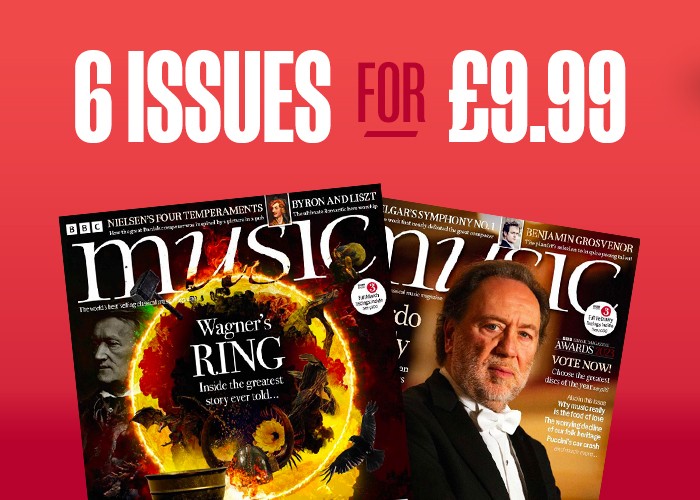Oboe vs clarinet: what is the difference between these two woodwind instruments?
How do these two woodwind instruments differ? And what are the best works written for each? We take a look at the oboe and clarinet

The oboe and the clarinet are both members of the woodwind family of instruments. What's more, on the surface they look – and even sound – somewhat similar. There are, however, some key differences, as we will see.
Both instruments have also inspired some beautiful music, and we'll share some of our favourites further down this article.
First, though, a brief introduction to the woodwind family as a whole.
What is the woodwind instrument family?
The woodwind instrument group includes the clarinet, oboe, flute, bassoon and saxophone.
Woodwinds form part of the larger wind instrument group. A wind instrument is any instrument that uses a column of air blown by the performer, which then resonates to create sound and pitch. As such, the larger wind instrument family contains both the woodwinds and the brass instruments.
Woodwinds can be distinguished from brass instruments (such as the trumpet, trombone and French horn) by the way in which they create sound. Essentially, woodwinds create sound by dividing the air blown into them against an edge. This is often by means of a reed, though not always – the flute and piccolo being exceptions here, as they use a lip plate instead.
Oh, and although the name might suggest otherwise, woodwinds aren't always made of wood. Take the saxophone, for example: it's made of brass, so might appear to belong to the brass section. However, it uses a reed to produce sound – so joins the clarinet, oboe and others in the woodwind family.
What is the difference in appearance between an oboe and a clarinet?
There are some visual differences between the two instruments. For one thing, the bell (the bottom of the instrument) is noticeably flared on a clarinet, but more simply rounded on an oboe.
A clarinet uses a single reed, while an oboe employs a double reed. Lastly, on a clarinet the tone holes (openings that change the pitch according to whether they are closed or open) are mostly open, while those on an oboe are largely closed.
What is the difference in the sound made by an oboe and a clarinet?
Another difference between the two instruments is, of course, the sound each produces.
Generally, the oboe produces a somewhat brighter and more penetrating sound, while its clarinet sibling creates a lower, mellower, perhaps 'darker' tone. That dark warmth means that the clarinet gets plenty of use in jazz music as well as classical: the oboe, on the other hand, tends to be more restricted to the classical genre.
What are the most famous classical pieces written for the clarinet?
Composers have written some beautiful pieces for the clarinet.
Mozart's Clarinet Concerto is a justly famous clarinet showcase, written for the performer Anton Stadler. Mozart clearly recognised the instrument's expressive potential, writing to Stadler, 'Never would I have thought that a clarinet could be capable of imitating the human voice as deceptively as it is imitated by you. Truly your instrument has so soft and lovely a tone that nobody with a heart could resist it.'
Other composers to produce beautiful clarinet concertos included Weber, Nielsen, Finzi and Copland.
Mozart and Brahms both wrote sublime quintets for the clarinet, in which the instrument is paired with a string quartet. Brahms' Clarinet Quintet, in particular, mines the instrument's soulful, somewhat autumnal quality beautifully. This can be heard perfectly in the version by the Amadeus Quartet and clarinettist Karl Leister.
Other beautiful classical clarinet works to listen out for include Poulenc's Sonata for Clarinet and Piano, and another Brahms masterpiece, the Clarinet Sonata No.2.
And we mustn't forget George Gershwin's iconic Rhapsody in Blue, with its famous glissando, in which the clarinet famously glides up the scale.
What are the most famous classical pieces written for the oboe?
The oboe is slightly less well represented in the classical canon, but there are still some wonderful works for the instrument. Here are four oboe works worth exploring.
Ralph Vaughan-Williams: Oboe Concerto (1943-44)
Vaughan Williams wrote this beautiful piece at around the same time as his famous Fifth Symphony, with which the Oboe Concerto shares some characteristics. In particular, both works display a calm, pastoral quality which must have come as a welcome antidote to the horrors and stresses of war.
Richard Strauss: Concerto for Oboe and Small Orchestra (1945)
Written near the end of his life, the elegant Oboe Concerto nonetheless sees Strauss looking back to the Classical and early-Romantic music of his youth.
Francis Poulenc: Trio for Oboe, Bassoon and Piano (1926)
The music of Francis Poulenc (1899-1963) is often richly melodic, and his beautiful Trio for Oboe, Bassoon and Piano is no exception. Full of feeling, it seems to have Mozartian echoes in places.
Bohuslav Martinů: Concerto for Oboe and Small Orchestra (1955)
The wonderful 20th-century Czech composer Bohuslav Martinů (1890-1959) wrote a huge array of music for a wide range of instruments and ensembles. Tangy harmonies and syncopated rhythms often feature. His Oboe Concerto is just one of dozens of Martinů works worth diving into.
Pic: Getty Images
Authors

Steve has been an avid listener of classical music since childhood, and now contributes a variety of features to BBC Music’s magazine and website. He started writing about music as Arts Editor of an Oxford University student newspaper and has continued ever since, serving as Arts Editor on various magazines.




